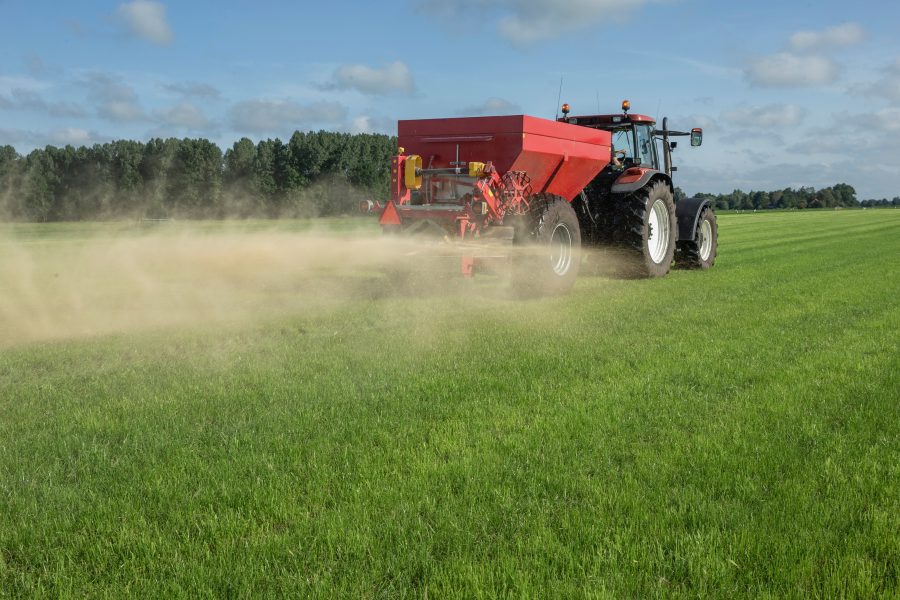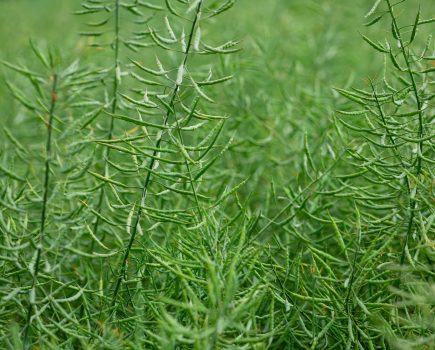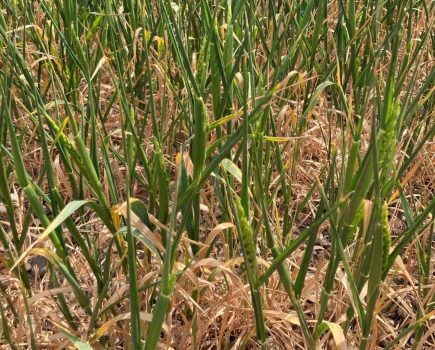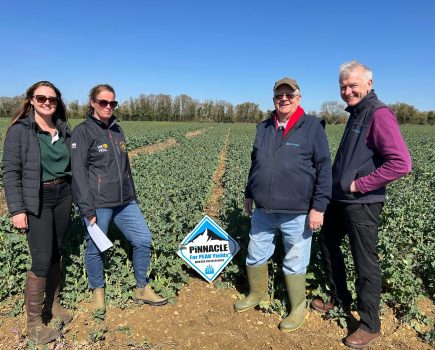It feels far too soon to be thinking about spring nitrogen applications, given that many drills have only recently been parked up following this winter’s drilling campaign. It won’t be long, however, before crops start to grow and fertiliser spreaders are back on.
Soil Nitrogen testing
Before any nitrogen gets applied, it is important to calculate or measure how much nitrogen is likely to be left in the soil and available to the crop. Soil type, previous crop, rainfall and previous manure applications will influence the soil nitrogen supply (SNS), so each farm and field will be different.
Where possible, it is worth getting some fields tested to 90cm to measure their soil mineral nitrogen (SMN) levels to help determine what the soil nitrogen supply is. There is often funding through local water companies for this service. This helps to determine how much nitrogen is required for the spring. If the SNS index is low, then a full nitrogen programme will be required, with early applications likely to be needed. However, where the SNS level is high, we will be able to cut back nitrogen applications this spring.
Fertiliser Tray testing
It is strongly recommended that growers get their fertiliser spreaders calibrated before applying any fertiliser this year, to ensure an even spread. Most products will spread slightly differently and so calibration is essential to ensure a uniform spread. A coefficient of variation over 20% will lead to visible striping in crops and a likely yield decrease. The financial implications of this can be huge, especially where milling wheat is being grown and protein levels are compromised.
What should I prioritise?
Wheat after oats, second wheats and crops after maize will likely have a low SNS and should be a priority for early nitrogen application, especially given that we have had another wet winter and it is likely that there has been significant nitrate leaching. Wheat after a legume, or oilseed rape, will likely have a higher SNS and should not be as high priority for early nitrogen unless the crop is noticeably behind.
Early nitrogen applications are designed to aid tiller survival, increase rooting and build biomass, and therefore late-drilled and backward crops should be a priority. This will likely be a large proportion of winter wheat this year, with many crops drilled into November being backwards in development. Any early-drilled crops that have a high tiller count won’t want nitrogen too early. Creating a large biomass on early drilled crops will only lead to higher disease pressure, especially septoria tritici, as well as a greater risk of lodging.
Tiller survival is also vital for winter barley to ensure enough ears/m2 to optimise yield potential. Winter barley should therefore be targeted early for nitrogen applications to ensure yield potential is maintained.
Nitrogen applications on oilseed rape will depend on canopy size. Earlier-drilled crops with large canopies are likely to be carrying significant nitrogen within the crop and may not need pushing too early. Later-drilled crops will need encouraging to increase biomass and get the crop to a green area index of 3.5 by yellow bud (GS59). This will be especially important where pigeon damage is evident. Where cabbage stem flea beetle larvae are a concern, early nitrogen will help to increase stem size and strength and reduce potential damage this spring.
This month’s contribution comes from Jonny James, CCC Agronomy.
For more like this, sign up for the FREE South East Farmer e-newsletter here and receive all the latest farming news, reviews and insight straight to your inbox.







